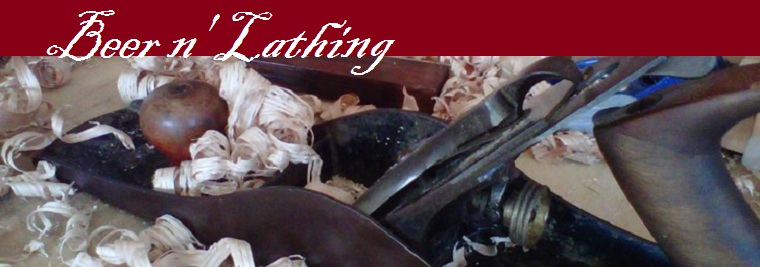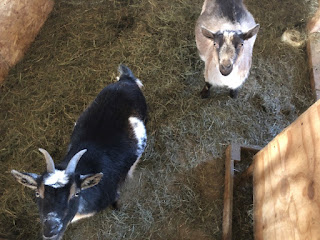My wife finally decided that the couch was too big for her crafting room. Honestly, it was too big for this house. We bought it prior to moving here and it hasn't ever had a good fit.
We tried having it in the "living room". After a year or so, we decided to move it to her crafting room which had recently been relocated to the first floor. The couch had to go through our bedroom, out the sliding windows of the sunroom, carted around the exterior of the house, back in through the front door and finally into the crafting room. Like the workbench, it's a beast.
Now, after being in the crafting room for some time, it's too big and needs to be repurposed. Time to make it a chair! (I hate to admit this is actually the second couch I've torn apart in the last 5 years.)
I yanked it into the hallway and tipped it over. Time to see what I'm dealing with.
Pulling the bottom dust cover off, I see that it's braced in thirds and the arms are boxed in with press board. I've got my plan of attack figured out.
With a utility knife I slice the pillows and save the stuffing. I also cut into the canvas.
Then I completely saw through anything holding the arm assembly to the frame.
I toss the arm assembly onto the bench to clean it up and trim the canvas.
I then prepare to cut the center third out of the frame.
The center has been removed.
That's what is left, and the main part of the new chair.
I then trim the excess bit off from the main portion. I want to even the rails to properly receive the arm assembly.
I left the two middle rails long as they would slide into the slots on the arm assembly. Those seats springs are quite powerful and gave my knuckles a good rapping.
Using a couple braces, I slide the seat rails into position then screw the arm assembly down to the seat frame.
A little tucking and stapling, left the canvas looking like it had always been there.
I also used staples to close the open end of the pillow and secure it to the frame.
I pulled the back canvas back into position and stapled that as well. I also stapled the bottom dust cover back into place.
And now we have a new old chair.
Gilbert will enjoy the left over pillows.
Dan.


















































